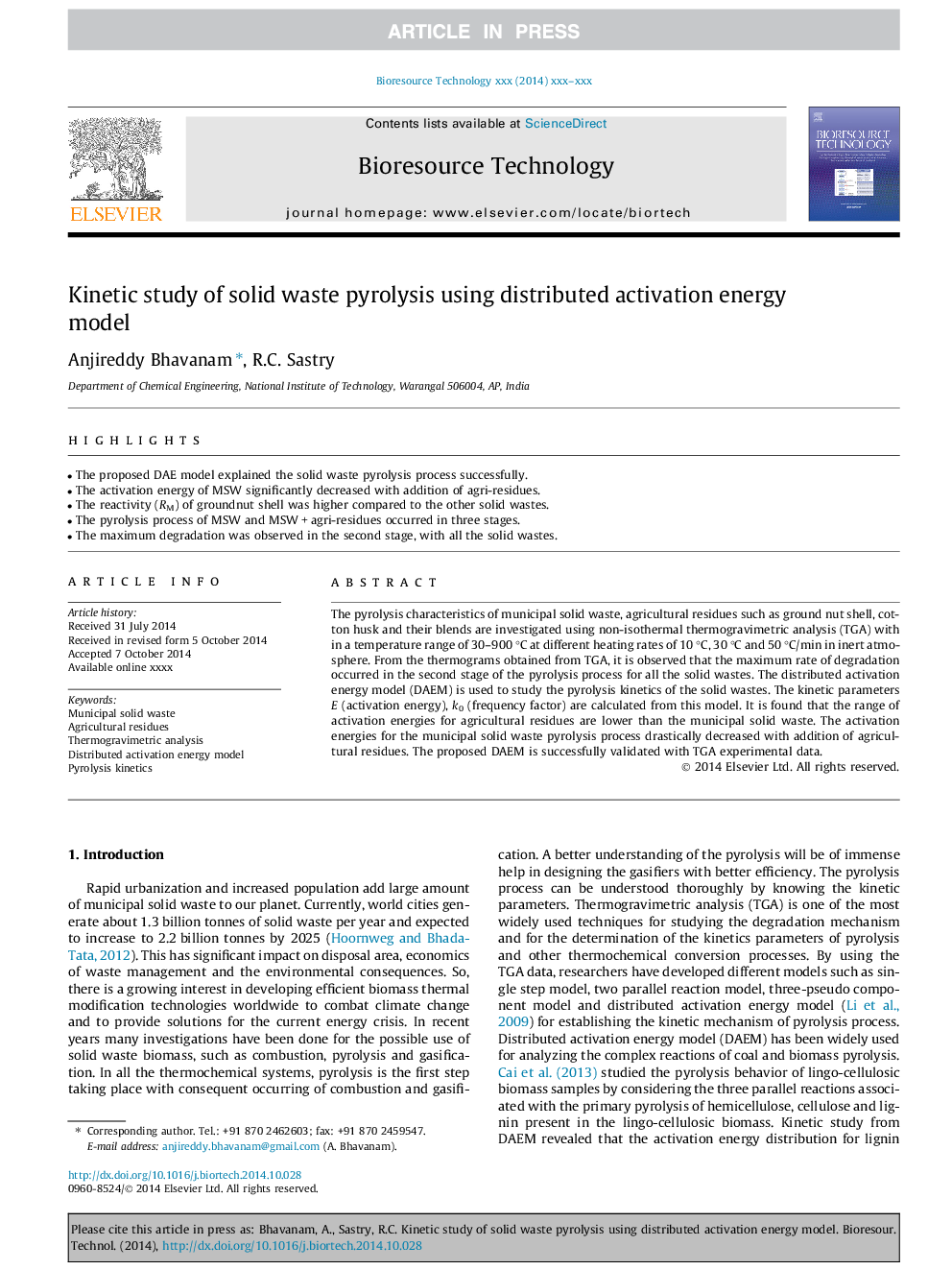| Article ID | Journal | Published Year | Pages | File Type |
|---|---|---|---|---|
| 7075267 | Bioresource Technology | 2015 | 6 Pages |
Abstract
The pyrolysis characteristics of municipal solid waste, agricultural residues such as ground nut shell, cotton husk and their blends are investigated using non-isothermal thermogravimetric analysis (TGA) with in a temperature range of 30-900 °C at different heating rates of 10 °C, 30 °C and 50 °C/min in inert atmosphere. From the thermograms obtained from TGA, it is observed that the maximum rate of degradation occurred in the second stage of the pyrolysis process for all the solid wastes. The distributed activation energy model (DAEM) is used to study the pyrolysis kinetics of the solid wastes. The kinetic parameters E (activation energy), k0 (frequency factor) are calculated from this model. It is found that the range of activation energies for agricultural residues are lower than the municipal solid waste. The activation energies for the municipal solid waste pyrolysis process drastically decreased with addition of agricultural residues. The proposed DAEM is successfully validated with TGA experimental data.
Keywords
Related Topics
Physical Sciences and Engineering
Chemical Engineering
Process Chemistry and Technology
Authors
Anjireddy Bhavanam, R.C. Sastry,
